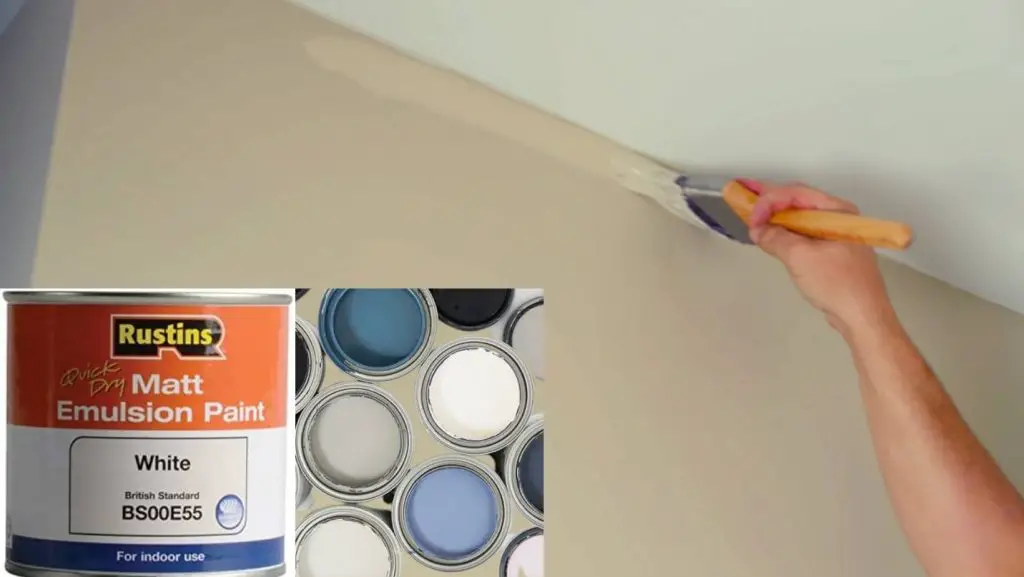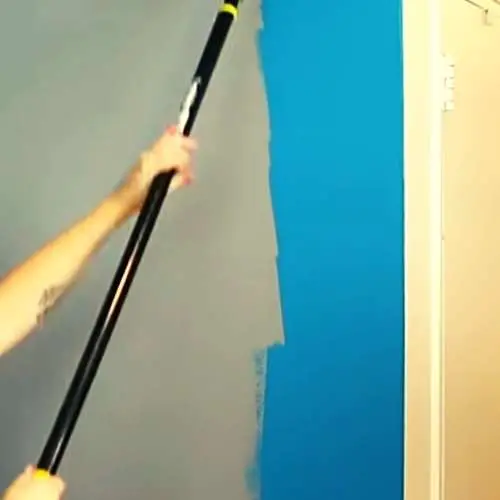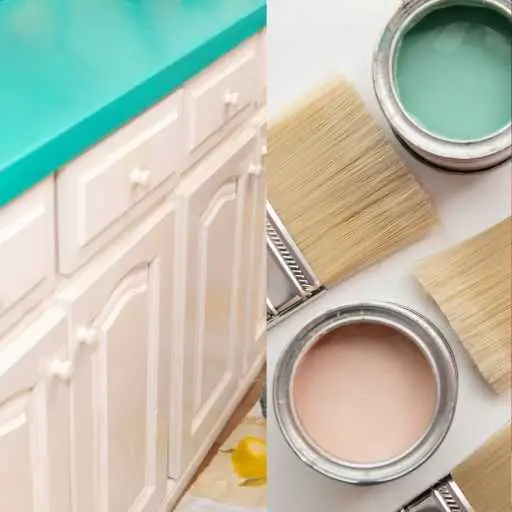A few days back, I removed all the wallpapers from the bathroom walls, washed them, and repaired them. Then I decided to use a matt finish on the walls. But, after finishing the painting job, I was not too fond of it. I didn’t want my walls to be this dull and lifeless.
I wondered if I could paint Satin over Matt as Satin offers a better sheen than Matt. So I asked experts and did some research. So if you also have this question in mind, “Can I paint satin over matt?”
The answer is, ‘Yes, You can paint satin over matt!!’ It might seem impossible – after all, matt finish paints have a flat appearance with very little sheen. If you are thinking about repainting your walls or furniture with satin paint, please read on for essential information about how this type of paint interacts with other finishes.
Satin paint will look different when applied over various surfaces – some will look great and provide you with a better sheen, while others may appear dull and lifeless. While several different types of matt paints are available today, almost all of them can be successfully covered with satin paint.

What Is Satin Paint?
In the spectrum of sheen, the two extremes are Matt and Gloss. Eggshell and Satin come in between these two finishes. If you want to rank these four finishes based on the sheen and glossiness they provide, you can rank them as such:
- Matt
- Eggshell
- Satin
- Gloss
While Matt provides the least amount of sheen, gloss comes with a high amount. You can also distinguish the durability of the paint by its shininess. The shinier paint is the more durable one.
Satin paint has a sheen level between eggshell and glossy paint. This is because it has a low glossy finish with a very subtle amount of sheen. In addition, matte paints are usually non-reflective, while satin paints are usually semi-reflective.
Satin finish paint is a good choice when you want to achieve a subtle, non-reflective finish that looks good in all types of lighting. It is often used in places where reflections are undesirable, such as above a fireplace or in a child’s room. Moreover, Satin paint is washable
When Can You Paint Over Matt?
Freshly applied matt paint gives you leverage to apply Satin over it. If you intend to repaint a surface that already has paint on it, you should wait till the surface is completely dry. If you want to apply Satin paint on a surface that has previously been finished with matt paint, consider the following steps:
– Sand the surface in order to remove any loose paint.
– Remove all dust using a vacuum cleaner.
– Apply a primer to the surface.
– Cover the surface with two coats of satin paint.

When Should You Not Paint Over Matt?
There are certain instances when you should avoid painting over matt paint. When the surface is stained, you should go for specially designed paint for such surfaces. If it is a surface made of wood containing very dark stains, for example, the surface may absorb the paint, which is something you don’t want to happen.
It would be best if you did not try to paint surfaces made of fiberglass, polyurethane, or polyester with regular paint. Instead, the best option is to use a stain-blocking primer and a paint designed for use on such surfaces.
What Will Happen When You Paint Satin Over Matt?
The effect that you will get mainly depends on the wall finish. Though you can expect different results, they will provide good results in most applications.
Let’s have a look at what sort of look you will get on different surfaces:
- On Wood: The satin finish will make the surface look lighter if you want to paint over a dark stain. And over a light stain, the stain finish will darken the surface.

- On Plaster: The satin finish will change the surface color if you intend to paint over a plaster.
- On concrete: You can expect the satin color to darken the surface.
- On drywall: On drywall, a satin finish works better. It will make the surface look brighter.
How Does Satin Paint Look?
You may wonder how satin paints look. The following examples can clear your confusion and give ideas on how satin paints look on different surfaces.
On wooden furniture, Satin proves to be the ideal paint. It provides the natural look of wood and hides all the imperfections, such as nicks, scratches, and dents.
On plaster, Satin offers a subtle sheen. You will love the way you can decorate any room in the house with a satin finish. However, it may seem tricky to find the appropriate paint finish for plaster walls because the absorbent surface can attract too thick paint.
On concrete, you may want a glossy finish. However, this is not a flawless finish with little light available. In this case, you can prefer a satin finish instead. Satin finish will offer perfect sheen in such less-lighted rooms.
On drywall, everyone prefers flat matt or semi-gloss paint. You can finish your drywall with a satin finish, but you must ensure that paint is specifically designed for the such surface.
The Bottom Line
If you want to paint over a matt surface, make sure you keep the necessary stuff in mind.
Firstly, make sure that it has been recently applied. You need to sand down the surface if it is old enough.
Plus, consider applying a primer before putting on paint. Satin paint is very popular because of its affordability and can be used in high-traffic areas such as the bathroom, kitchen, and hall room. Before applying Satin over matt, consider the above-stated information.
Follow the tips carefully and always be cautious. Because satin paint will look different when applied over various surfaces – some will look great, while others may appear dull and lifeless.

S. Pushon is a paint expert, self-taught artist, and currently working as an adviser in the paint industry as a Quality Improvement and Development Assistant.
An artist by heart, he draws remarkable art pieces and as a professional paint industry individual, he seeks the insight and shares with enthusiasts. Read more…
